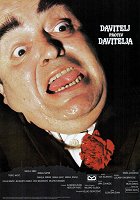Réalisation:
Slobodan ŠijanPhotographie:
Milorad GlusicaActeurs·trices:
Tasko Nacic, Nikola Simic, Srdjan Saper, Sonja Savic, Djordje Nenadovic, Tomislav Gotovac, María Baxa, Predrag Milenkovic, Pavle Mincic (plus)Résumés(1)
It is the mid-1980s and the city of Belgrade is aiming for metropolitan status which would put it on a level with New York, Paris and London. For a city to reach that category it has to attain a special level of crime. It needs a serial killer. Exhibitionists in cemeteries, peepers in parks, bank robbers, reckless drivers, rapists, murderers, all these Belgrade already has. For the city to be classified as a metropolis it needs the king of criminals: the strangler. Suddenly a series of murders takes place. A deranged flower seller is strangling women on the streets of Belgrade, their crime in his eyes being that they refused to buy his carnations. At last, the city has its own serial killer. Finally it can attain the status of metropolis. A local new wave rock musician become obsessed with the murders and releases a single dedicated to "The Belgrade Strangler". An outspoken female DJ condemns media interest in the case, arousing the ire of the Strangler himself. Gradually these three characters find themselves drawn together, leading to a surprising and bizarre climax. (Mondo Macabro)
(plus)Critiques (2)
When, at the very beginning of Strangler vs. Strangler, a title appears declaring that it is a “comedy of terrors”, it is equally an instruction and an intentionally false suggestion for the audience. Slobodan Šijan actually made both a deviant time capsule and a provocative satire that takes swipes at many of the authorities of the state and regional apparatus in the former Yugoslavia at the time. However, he dressed it up in the guise of a murder ballad that is simultaneously an absurd farce and disturbingly morbid, which in terms of style and narrative may evoke the more recent, similarly eccentric caricatures of society in the form of Bad Boy Bubby and Delicatessen. To a certain extent, Šijan based his film on the classic M – at least, he admits that he cast Taško Načić in the lead role because Načić reminded him of Peter Lorre. On closer inspection, we find several points of contact between the two films, as well as clever differences. Like Fritz Lang, Šijan portrays an entire city and its social structures through the search for the murderer, but with the crucial difference that communist Belgrade is unable to unite against a common enemy because, like the film’s main characters, it is mired in anxieties, frustrations and self-absorption.
()
Not every strangler is born under a lucky star. That also applies to films, and this one is a perfect example. Though the twist made me consider a third star.
()

Annonces